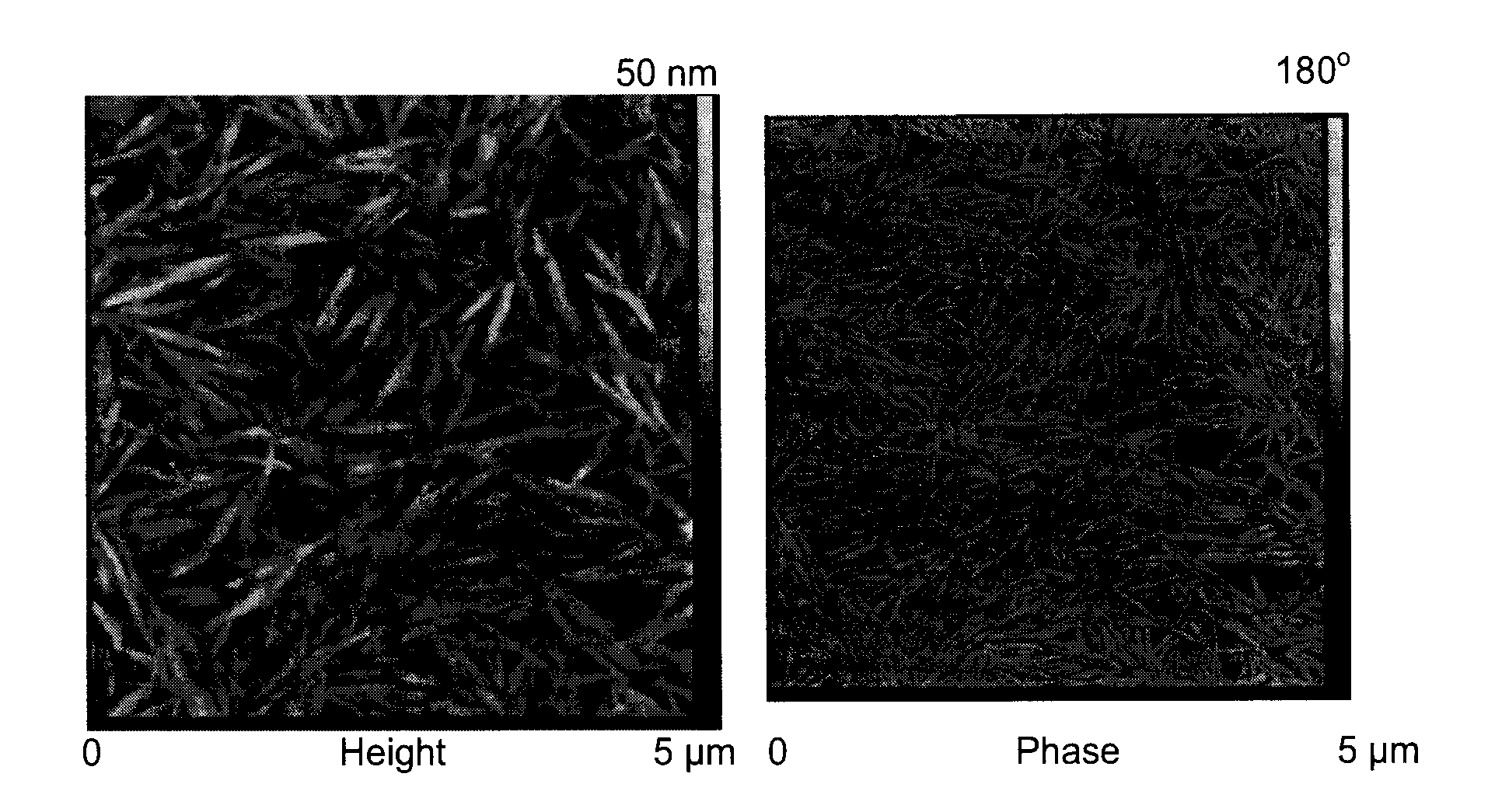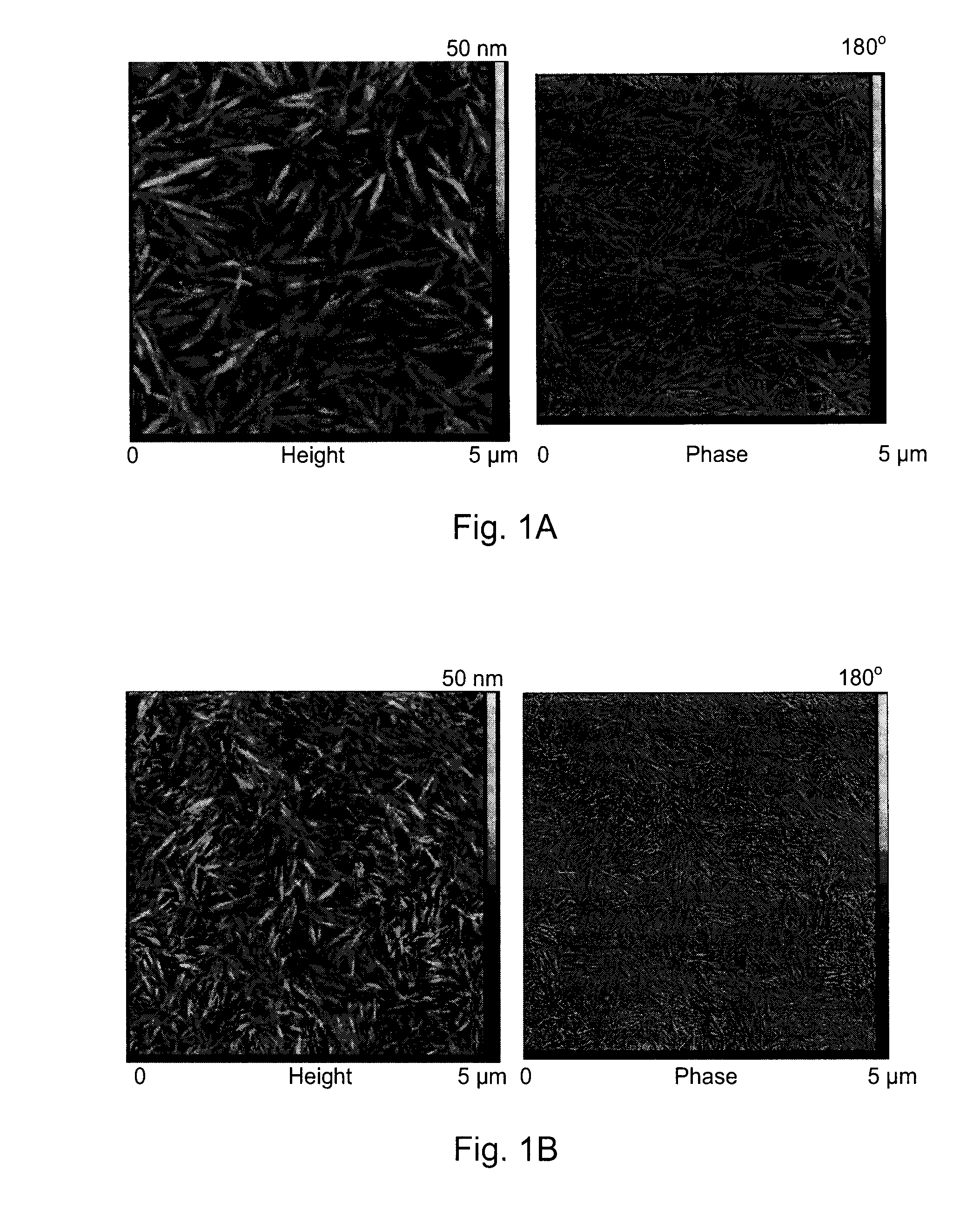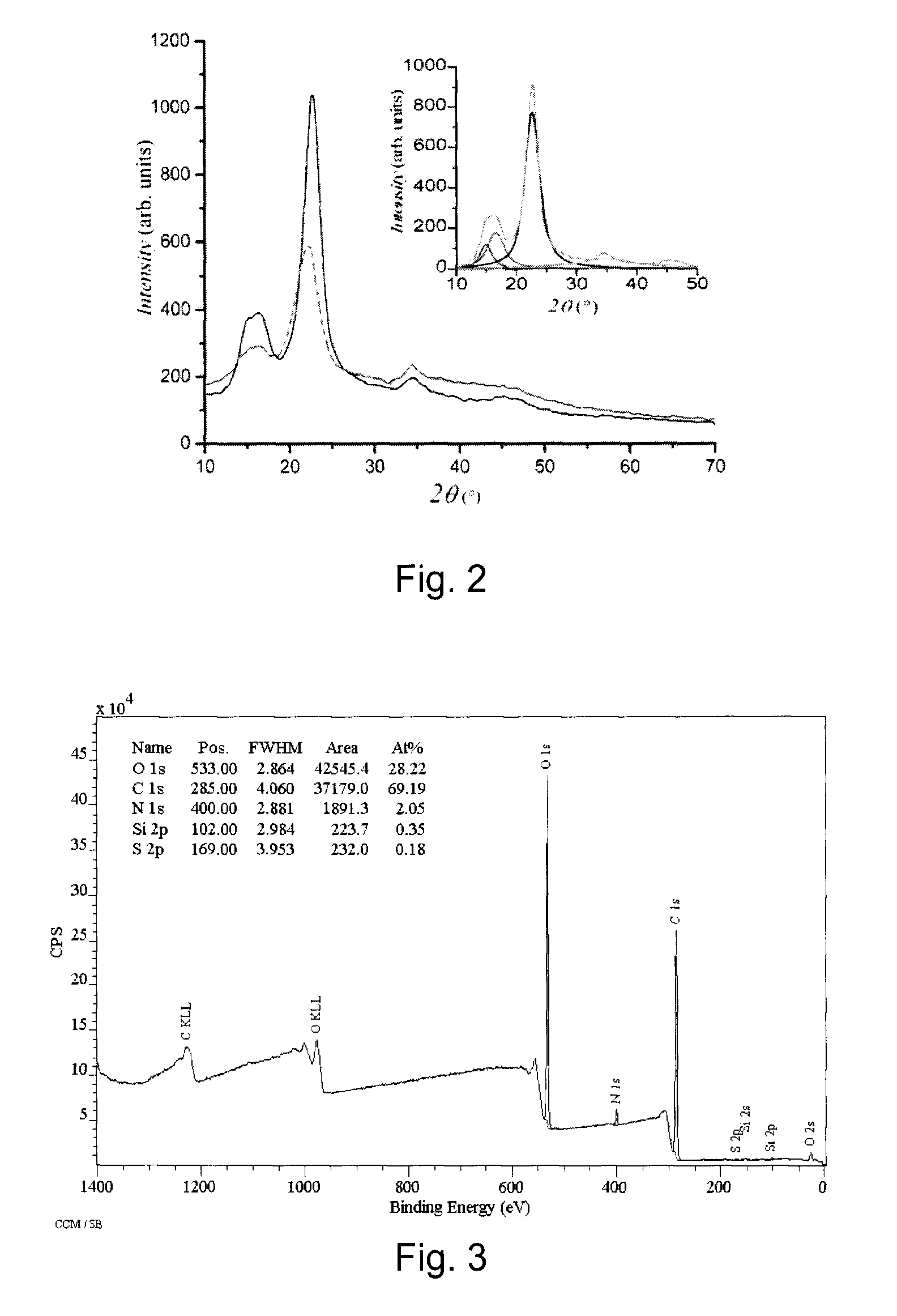Cellulose nanocrystals from renewable biomass
a technology of cellulose nanocrystals and renewable biomass, which is applied in the direction of cellulosic plastic layered products, natural mineral layered products, transportation and packaging, etc., can solve the problems of high operating costs, high initial capital investment, and high cost of procedures
- Summary
- Abstract
- Description
- Claims
- Application Information
AI Technical Summary
Benefits of technology
Problems solved by technology
Method used
Image
Examples
example 1
Preparation of Cellulose Nanocrystals (CNCs) by Persulfate
[0029]The process described in this example is an environmentally friendly, one-step procedure for the preparation of CNCs from different cellulosics. Ammonium persulfate has a very high solubility in cold water (85 g / 100 mL), while the sodium (55.6 g / 100 mL) and potassium (5.3 g / 100 mL) counterparts (Weast, 1983) have lower solubility. CNCs were prepared by simply heating cellulosic materials at 60° C. in 1 M persulfate for 16 h with vigorous stirring, as described in more detail below using ammonium persulfate as an example. Lignocellulosic fibers such as flax and hemp were cut into short fragments (about 2-3 mm) prior to the persulfate treatment. Prolonged reaction time and persulfate concentrations above 1 M led to excessive hydrolysis, thereby reducing the yield of CNCs.
[0030]Thus, in one example, starting biomass material (0.1 g) was added to 10 mL of 1 M ammonium persulfate solution (conductivity about 230 mS·cm−1). Th...
example 2
Atomic Force Microscopy (AFM) and Transmission Electron Microscopy (TEM)
[0031]CNCs prepared using ammonium persulfate were sonicated and atomic force microscopy (AFM) micrographs of such resulting CNCs were obtained using a Nanoscope™ IV (Digital Instruments, Veeco, Santa Barbara, Calif.) with a silicon tip operated in tapping mode. Particle analysis of the AFM micrographs was performed using Scion™ Image (http: / / www.scioncorp.com / pages / scion_image_windows.htm).
[0032]TEM micrographs were obtained by a Hitachi transmission electron microscope (TEM) at 60 kV (model H-7500, Tokyo, Japan). TEMs were obtained as follows. A small amount of CNCs was suspended in methanol and sonicated to disperse the material. A 20 μL drop of well dispersed suspension was then dried on a Formvar-carbon coated grid and analyzed. Low Voltage Transmission Electron Microscopy (LVTEM) micrographs were obtained by a Delong LVEM (Soquelec Ltd., Montreal, QC, Canada) low-voltage TEM at 5 kV, with lower acceleratin...
example 3
Scanning Electron Microscopy (SEM)
[0037]SEM analysis was performed on a Hitachi S 2600N scanning electron microscope at 2.8 kV. SEM revealed morphological changes on the surface of the fibers upon ammonium persulfate treatment, indicating the destruction of the amorphous regions. In contrast, the fiber remained intact when subjected to heating without ammonium persulfate. Ammonium persulfate was able to in situ produce clean CNCs by dissolving lignin, hemicellulose, pectin, and other plant contents. Free radicals are formed when the solution containing persulfate is heated (S2O82−+heat→2SO4−) (Hsu et al., 2002). Therefore, persulfates are often used as initiators for emulsion polymerization reactions in the preparation of polymers and synthetic rubber. In addition, under the acidic condition used in this study (pH 1.0), hydrogen peroxide was formed (S2O82−+2H2O→HSO4−+H2O2) (Edgar and Gray, 2003; Stiernstedt et al., 2006). Collectively, such free radicals and H2O2 should be capable o...
PUM
| Property | Measurement | Unit |
|---|---|---|
| temperature | aaaaa | aaaaa |
| time | aaaaa | aaaaa |
| diameter | aaaaa | aaaaa |
Abstract
Description
Claims
Application Information
 Login to View More
Login to View More - R&D
- Intellectual Property
- Life Sciences
- Materials
- Tech Scout
- Unparalleled Data Quality
- Higher Quality Content
- 60% Fewer Hallucinations
Browse by: Latest US Patents, China's latest patents, Technical Efficacy Thesaurus, Application Domain, Technology Topic, Popular Technical Reports.
© 2025 PatSnap. All rights reserved.Legal|Privacy policy|Modern Slavery Act Transparency Statement|Sitemap|About US| Contact US: help@patsnap.com



